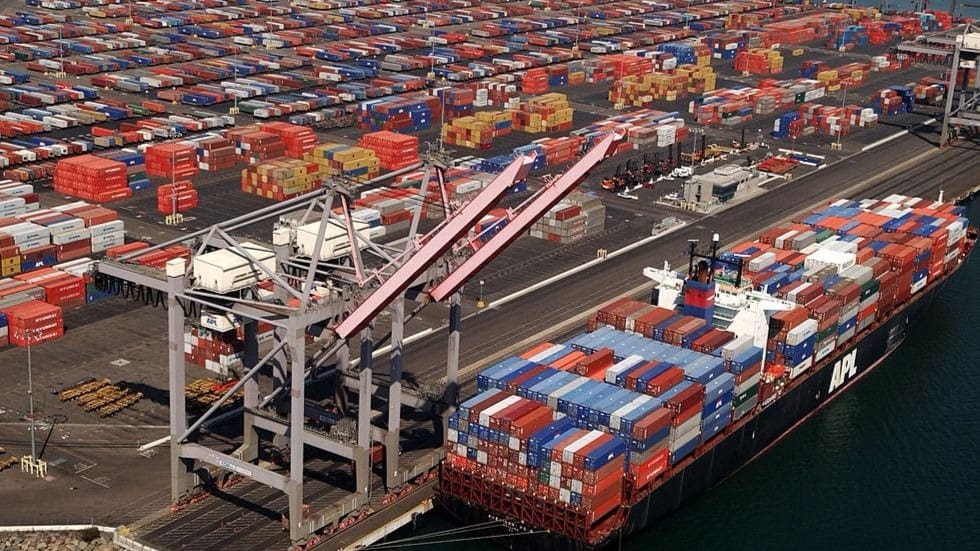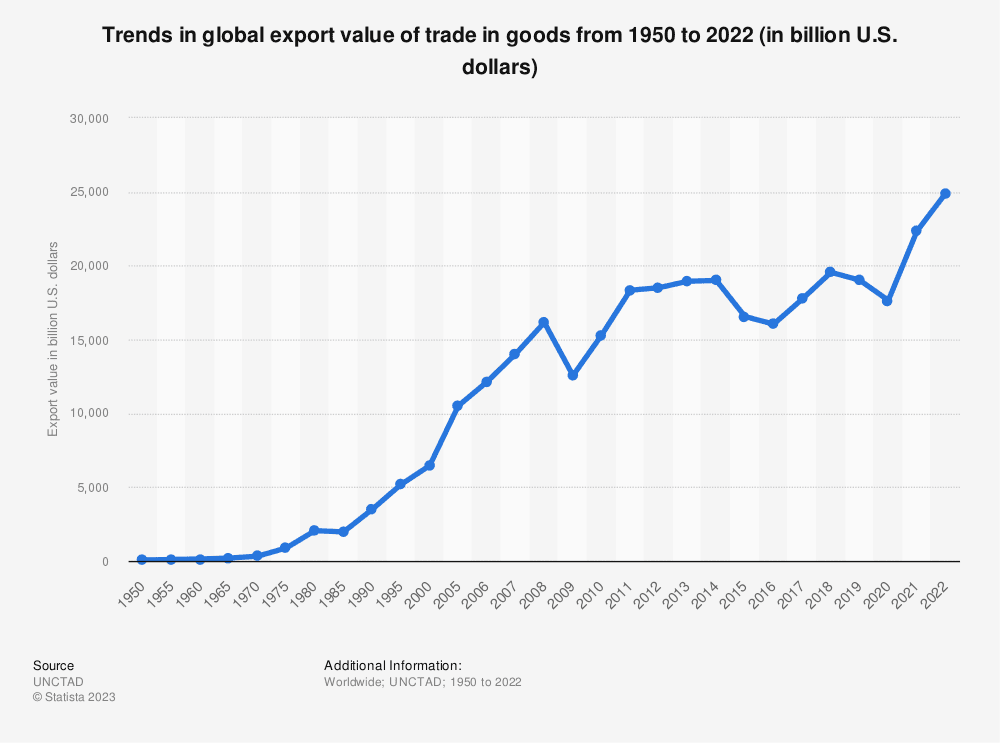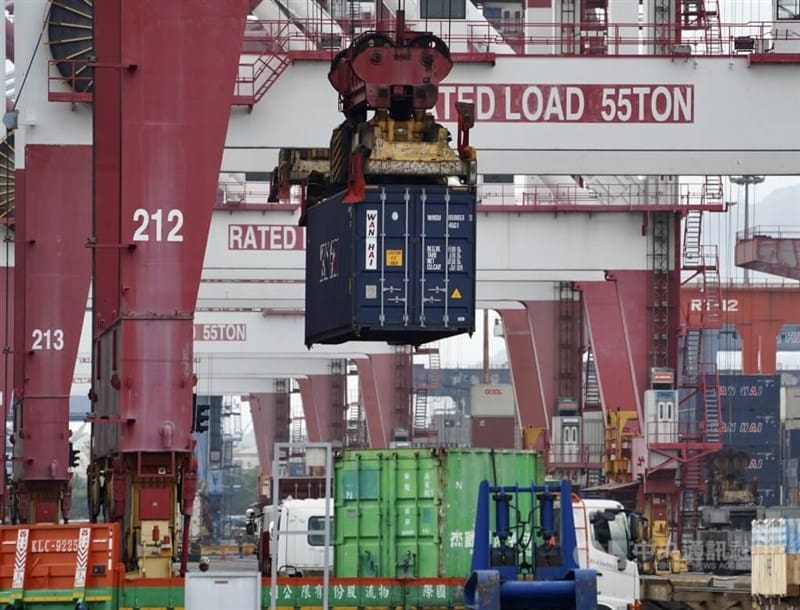Business
8 Crucial Global Commerce Pacts Reshaping World Trade


The landscape of global commerce is constantly evolving, and the emergence of crucial trade pacts is reshaping the dynamics of international trade. These agreements have the potential to significantly impact the flow of goods and services across borders, influencing the economic fortunes of nations and the competitiveness of businesses on a global scale.
From the EU-South Korea FTA to the Pacific Alliance, these pacts represent strategic partnerships that are redefining the way countries engage in trade. Understanding the implications of these agreements is essential for anyone with an interest in the interconnected world of commerce.
Key Takeaways
- EU trade agreements, such as the EU-South Korea FTA and EU-Canada CETA, have led to significant increases in exports and foreign direct investment for both parties involved.
- Regulatory cooperation efforts, including mutual recognition of standards and cooperation on new regulations, have been implemented to streamline trade barriers and promote economic growth.
- Asia-Pacific trade agreements, like the Australia-US FTA and India-Japan CEPA, have resulted in improved market access, increased exports, and strengthened trade relations between countries.
- Regional trade agreements, such as RCEP and the Pacific Alliance, aim to lower tariffs, deepen economic integration, and foster innovation and entrepreneurship, thereby creating potential for one of the largest free trade areas in the world.
EU-South Korea FTA
The EU-South Korea Free Trade Agreement, which came into effect in July 2011, has significantly impacted the trade relations between the two parties, leading to measurable changes in their respective economies.
This agreement has played a crucial role in boosting trade between the EU and South Korea. In the first five years of the agreement, EU exports to South Korea increased by 55%, while South Korean exports to the EU increased by 35%. The removal of almost all tariffs on goods and the reduction of non-tariff barriers have facilitated this substantial growth in trade.
The agreement has also led to an increase in foreign direct investment between the two parties. South Korea has experienced a notable rise in investments from EU countries, which has contributed to the modernization and expansion of various sectors in the South Korean economy.
Additionally, the trade agreement has fostered cooperation in areas such as intellectual property, competition policy, and sustainable development, further enhancing the economic ties between the EU and South Korea.
EU-Canada CETA
The EU-Canada Comprehensive Economic and Trade Agreement (CETA) has been a focal point in reshaping global commerce. The agreement presents significant trade benefits for the EU and has had a notable impact on the Canadian economy.
Moreover, CETA has fostered regulatory cooperation efforts between the EU and Canada, enhancing the alignment of standards and regulations to facilitate trade.
Trade Benefits for EU
The EU-Canada Comprehensive Economic and Trade Agreement (CETA) has facilitated significant trade benefits for the European Union, leading to improved market access, reduced tariffs, and increased opportunities for export growth.
- Enhanced Market Access: CETA has provided EU businesses with improved access to the Canadian market, allowing for increased trade and investment flows between the two regions.
- Tariff Reduction: The agreement has led to the elimination of tariffs on 98% of EU agricultural and industrial exports to Canada, resulting in cost savings for EU exporters and making their products more competitive in the Canadian market.
- Export Expansion: CETA has opened up new opportunities for EU companies to expand their exports to Canada, contributing to the growth of various sectors and bolstering the EU’s economic prosperity.
Impact on Canadian Economy
Facilitating enhanced market access and tariff reduction, the EU-Canada Comprehensive Economic and Trade Agreement (CETA) has had a substantial impact on the Canadian economy. Since its provisional application in 2017, Canadian exports to the EU have increased, providing Canadian businesses with improved access to the European market.


According to the Government of Canada, CETA has eliminated tariffs on 98% of all EU tariff lines, saving Canadian exporters an estimated $590 million annually. Additionally, the agreement has opened up opportunities for Canadian service providers and investors in the EU.
The increased trade and investment flows between Canada and the EU have contributed to economic growth, job creation, and enhanced competitiveness in various sectors, including agriculture, manufacturing, and services.
Regulatory Cooperation Efforts
Significant strides have been made in regulatory cooperation efforts under the EU-Canada Comprehensive Economic and Trade Agreement (CETA), enhancing alignment and convergence between the regulatory frameworks of the two economies. This collaboration aims to streamline trade barriers and promote economic growth.
Mutual Recognition: CETA facilitates mutual recognition of standards, certifications, and testing procedures, reducing duplicative processes and costs for businesses.
Regulatory Dialogues: Regular dialogues and information exchange mechanisms enable both parties to address regulatory divergences promptly, fostering a more predictable and transparent trading environment.


Cooperation on New Regulations: The agreement includes provisions for early information sharing and cooperation on new regulations, allowing for greater input from stakeholders and minimizing any potential trade disruptions.
These efforts are crucial in promoting trade liberalization and enhancing the overall competitiveness of both the EU and Canadian markets.
Australia-US FTA
Amidst the ongoing evolution of global trade agreements, the Australia-US Free Trade Agreement (FTA) has emerged as a pivotal component in the reconfiguration of international commerce dynamics. The FTA, which came into force in 2005, has significantly impacted trade between the two nations. The agreement eliminated tariffs on 99% of US manufactured goods and provided improved access for US service providers in Australia. From an Australian perspective, the FTA has resulted in increased agricultural exports to the US, particularly in sectors such as beef, dairy, and wine.
In recent years, the FTA has faced scrutiny and calls for a review, particularly around issues of intellectual property, pharmaceuticals, and investor-state dispute settlement provisions. Additionally, the agreement has been seen as a strategic tool for both countries to bolster their geopolitical influence in the Asia-Pacific region.
As the global trade landscape continues to evolve, the Australia-US FTA remains a significant factor in shaping the trade relations between these two major economies, and its ongoing impact will be closely watched by stakeholders in both nations and beyond.


India-Japan CEPA
The India-Japan Comprehensive Economic Partnership Agreement (CEPA) has been instrumental in facilitating tariff reductions between the two nations. This has led to increased market access for businesses. The agreement has paved the way for a more competitive and open trading environment. This has allowed for greater economic cooperation and investment opportunities. Through the CEPA, both countries have been able to strengthen their trade relations and create a mutually beneficial framework for commerce.
Tariff Reductions
India and Japan have agreed to implement tariff reductions as part of their Comprehensive Economic Partnership Agreement (CEPA), a move that is expected to significantly impact their bilateral trade relations. This strategic decision aims to foster greater economic cooperation and strengthen the trade ties between the two nations.
The tariff reductions under the CEPA will lead to increased market access for various goods and services, stimulating trade flows and promoting a more competitive environment for businesses.
Additionally, the tariff reductions are anticipated to lower the cost of imported goods for consumers, potentially leading to enhanced purchasing power and greater consumer choice.
Furthermore, the reduced tariffs are likely to encourage a surge in investments and innovation, ultimately driving economic growth and prosperity for both India and Japan.


Market Access
With the implementation of tariff reductions under the Comprehensive Economic Partnership Agreement (CEPA) between Japan and India, new opportunities for market access are emerging, marking a significant progression in their bilateral trade relations. The CEPA aims to enhance market access for goods and services, promote investment, and facilitate cooperation in various sectors.
Through this agreement, both countries are working towards eliminating or reducing tariffs on a wide range of products, thus creating a more conducive environment for trade. This move is expected to benefit various industries, including automotive, electronics, and pharmaceuticals, by providing them with improved access to each other’s markets.
The CEPA also includes provisions for addressing non-tariff barriers, which further facilitates market access. Overall, the market access provisions in the India-Japan CEPA are poised to foster greater economic collaboration and expansion of trade opportunities between the two nations.
RCEP
An ambitious regional trade agreement, the Regional Comprehensive Economic Partnership (RCEP) is poised to significantly impact global trade dynamics and reshape economic relationships within the Asia-Pacific region. RCEP involves 15 countries, including China, Japan, South Korea, Australia, New Zealand, and the 10 members of the Association of Southeast Asian Nations (ASEAN).
This agreement aims to lower trade barriers, streamline customs procedures, and enhance regional supply chains, potentially creating one of the largest free trade areas in the world. The RCEP’s potential impact can be understood through the following points:


- Market Access: RCEP aims to progressively lower tariffs and quotas, providing improved market access for goods and services among member countries.
- Economic Integration: The agreement seeks to deepen economic integration by harmonizing rules of origin, trade facilitation measures, and investment regulations.
- Geopolitical Implications: RCEP’s formation reflects a shifting global economic landscape, with implications for regional influence and trade relationships, particularly in the context of the ongoing U.S.-China trade tensions.
The implementation of RCEP has the potential to foster economic growth and cooperation, but its success will depend on effective implementation and the ability of member countries to navigate geopolitical complexities.
Pacific Alliance
The Pacific Alliance, a regional trade bloc comprising Chile, Colombia, Mexico, and Peru, has steadily gained prominence as a significant force in Latin American trade and economic integration. The alliance represents the eighth-largest economy in the world and the seventh-largest exporting entity. Its members account for more than 38% of Latin America’s GDP and 50% of the region’s total exports.
The Pacific Alliance aims to deepen economic ties and facilitate the free movement of goods, services, capital, and people among its member countries. It has implemented various measures to enhance trade and investment, including the elimination of tariffs on 92% of trade goods, the establishment of common standards and regulations, and the promotion of joint trade missions.
The alliance has also focused on fostering innovation and entrepreneurship, aiming to create a more competitive and dynamic business environment. Additionally, it has sought to strengthen ties with other regions, including Asia-Pacific, Europe, and North America, through trade agreements and strategic partnerships.
As the Pacific Alliance continues to expand its influence, its role in shaping global trade dynamics is increasingly significant.
SADC FTA
The Southern African Development Community Free Trade Area (SADC FTA) encompasses a group of countries in southern Africa aiming to eliminate trade barriers and promote economic integration within the region. This initiative seeks to bolster intra-regional trade and enhance the economic development of its member states. The SADC FTA has the potential to significantly impact the region and beyond, with several key points to consider:
- Promotion of Regional Economic Growth: By fostering trade liberalization and cooperation among member states, the SADC FTA aims to drive economic growth and development within the region.
- Enhanced Competitiveness: The reduction of trade barriers and the facilitation of increased cross-border trade are expected to enhance the competitiveness of SADC FTA member countries in the global market.
- Challenges of Implementation: While the SADC FTA holds promise, challenges related to infrastructure, regulatory harmonization, and capacity building need to be effectively addressed to fully realize its potential.
As the SADC FTA continues to evolve, its impact on the economic landscape of southern Africa and its potential implications for global trade dynamics will be closely watched.
ECOWAS Trade Liberalization Scheme
In light of the growing emphasis on regional economic integration, the ECOWAS Trade Liberalization Scheme has emerged as a pivotal initiative aimed at fostering trade liberalization and collaboration among member states in West Africa.
Established in 1979, the scheme aims to create a single, large market through the elimination of trade barriers, thereby enhancing economic cooperation and development within the Economic Community of West African States (ECOWAS).
By promoting the free movement of goods, services, and people, the scheme seeks to boost intra-regional trade, which currently stands at around 10% of total trade for ECOWAS member states, significantly lower than other regional blocs.


Additionally, the scheme aims to address non-tariff barriers and enhance the competitiveness of domestic industries, thereby fostering a more conducive environment for businesses to thrive.
However, challenges such as weak infrastructure, bureaucratic hurdles, and varying levels of economic development among member states continue to impede the full realization of the scheme’s objectives.
Despite these challenges, the ECOWAS Trade Liberalization Scheme remains a crucial mechanism for driving economic growth and integration within the region.
Frequently Asked Questions
How Do These Global Commerce Pacts Impact Small Businesses and Entrepreneurs in the Countries Involved?
Global commerce pacts have significant impacts on small businesses and entrepreneurs in the involved countries. These pacts can create opportunities for market access, but also pose challenges in terms of competition and compliance with new regulations.
What Are the Potential Environmental Consequences of These Trade Agreements?
The potential environmental consequences of global trade agreements demand careful consideration. Increased production and transportation can lead to higher carbon emissions, deforestation, and resource depletion. Balancing economic growth with sustainable practices is crucial.


How Do These Pacts Address Issues of Labor Rights and Worker Protections?
Labor rights and worker protections are addressed in these pacts through provisions that aim to uphold international labor standards, promote fair wages, safe working conditions, and protection of workers’ rights, contributing to a more equitable and sustainable global economy.
What Are the Potential Cultural Implications of Increased Trade Between These Regions?
Increased trade between regions has potential cultural implications, influencing language, food, and traditions. This can lead to cultural exchange, enrichment, and potential challenges as societies adapt to new influences and global interconnectedness.
How Do These Pacts Address Intellectual Property Rights and Technology Transfer Between Countries?
Addressing intellectual property rights and technology transfer between countries, these pacts aim to establish fair and equitable frameworks. By fostering collaboration and protecting innovation, they strive to create a conducive environment for global technological advancement and economic growth.


Hi, I’m Kyle Rivera, a news journalist and blog editor with the Daily Evening News. A TCU alum with a flair for storytelling, I spend my days uncovering impactful stories and my evenings exploring the realms of yoga, cycling, and whimsically bad poetry.
Travel is my escape; I’ve trekked from Tokyo’s neon lights to Iceland’s tranquil vistas. But no journey is complete without Mogli, my Golden Retriever, who’s redefining his breed standards in the most charming ways.
I love connecting with fellow travelers, yogis, cyclists, and anyone who enjoys a laugh at my poetic attempts. If you’re into stories that inspire, travel escapades, or just want to see what Mogli and I are up to, I’d love to hear from you on Instagram or Facebook. Let’s share tales and tips from around the globe!

